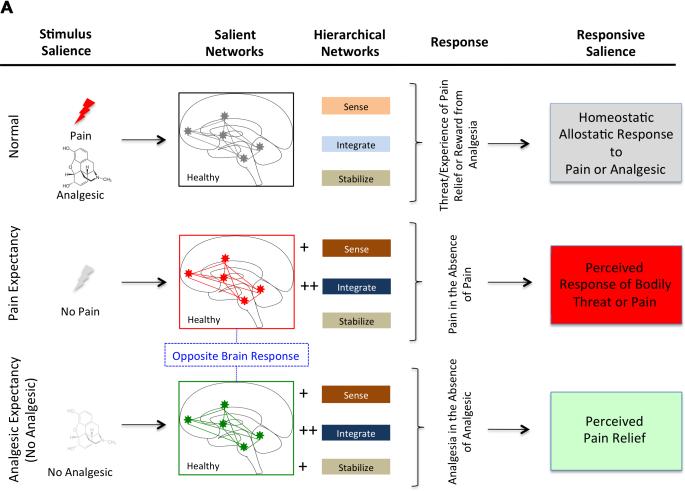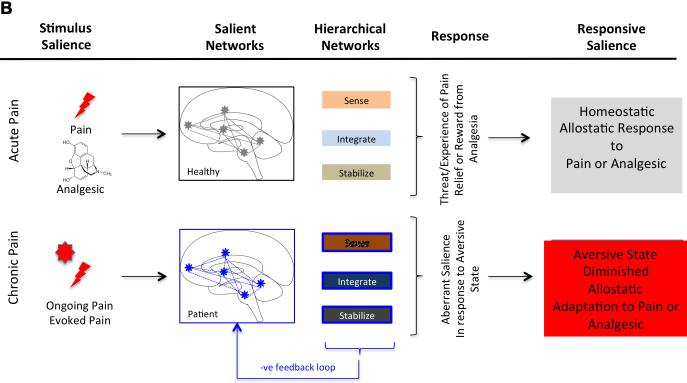Figure 3. Salience Processing in Acute (Experimental) and Chronic Pain.
3A: Salience Systems in Healthy Subjects: Three states are shown.
Top – normal where a salience response to pain (e.g., heat, sharp object, etc.) results in adaptive changes that sense, evaluate and respond to the stimulus in an adaptive manner (e.g., sense the stimulus as painful or potentially painful and may avoid the stimulus).
Middle - Salience Systems in the condition of Perceived Pain but no actual pain. Examples include social or personal empathy for an observed process such as watching a loved-one having pain, or nocebo (increased pain to a normally analgesic drug).
Bottom - Salience Systems in the condition of Perceived Pain Relief in the absence of an analgesic medication: Examples include the placebo response where an inert substance produces profound analgesia based on expectancy (placebo effect).
3B: Salience Systems in Chronic Pain Patient: Compared with healthy subjects, salient systems in chronic pain patients may be aberrant to both pain (ongoing or evoked). Abnormal processing in their sense (e.g., cognitive processing (Apkarian et al., 2004), integration (e.g., basal ganglia function ((Borsook et al., 2010);(Maleki et al., 2011); (Starr et al., 2011); (Baliki et al., 2012) and modulatory processing (e.g., periaqueductal gray ((Behbehani, 1995); (Linnman et al., 2012)) is postulated to contribute to such aberrant function of normal homeostatic salience processing. Ongoing background pain and evoked pain with use (particularly in conditions such as osteoarthritis) sets up a process of fear of future events. Such changes, that may be mediated through medial prefrontal -> amygdala circuits may result in “system failure” since it becomes a feed-forward loop that exacerbates the condition. The salience network is now damaged at two levels – its innate state is sensitized to pain-relevant input, and its response to external/salient cues or stimuli in the environment is compromised. Thus avoidance of physical activity for example may lead to further disability and worsening brain state. See Table 2.


